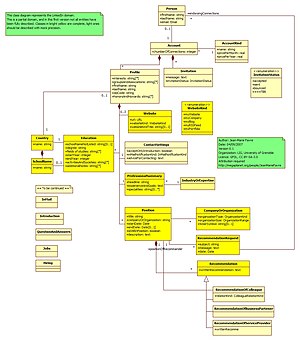
... How can this redesign make the LinkedIn experience go from good to great? Here you will find a breakdown of the recent changes, as well as what needs to be done in order to make the most of your new profile.
1. Basic Information – Make a Great First Impression
... Now, with a larger profile picture and more concise information, your Basic Information stands out as a snapshot of your professional profile. With this change, users should take the time to include a high quality photo – nothing blurry or unprofessional. Remember, this is the first impression connections and prospects will have of you.
2. Activity Feed – Start a Conversation
Below the Basic Information section is your own personalized “Activity” feed. This includes all of the links you have shared or articles you have liked on LinkedIn. This new activity feed is the perfect excuse to share your most recent blog post and other intriguing content directly on LinkedIn. Anyone looking at your profile will instantly be able to see the type of content you have shared and liked, as well as the comments and likes connections have left on your posts. This activity feed stands as your introduction as a thought leader, showcasing the industry topics and content you find engaging and relevant. Remember, what you share says just as much about you as the rest of your profile.
3. Background – Tell Your Professional Story
With a simple layout, user background information is now easier to navigate starting with your Summary – an often overlooked portion of the profile, but very important to include as you introduce connections to your career story. Completing this section will also take you one step closer to a completed profile.
 |
| This UML diagram describes the domain of LinkedIn social networking system. (Photo credit: Wikipedia) |
Adding to its more visual redesign of user profiles, LinkedIn has also added company logos next to the job positions listed as part of your employment history. In addition, Recommendations can be found directly beneath the respective job position.
Another relatively new change to the Skills and Expertise portion of your LinkedIn profile is Endorsements, where people can validate your strengths and areas of expertise.
Endorsements are displayed next to your various skills.
Editor’s Note: Some organizations, such as financial firms, are not allowing skill endorsements. Please assess your social media policy to insure compliant use of LinkedIn.
4. Connections – Say Hello to Your Network
Your connections now have a section of their very own. Found below your Background, connection profile pictures and titles are displayed for others to see.
5. Right-Hand Column – Discover New Insights
The right hand column of your profile is all about visualization. Boasting a simple design, this portion of your profile focuses on helping you strengthen your LinkedIn presence. Here are some of the newest changes introduced with the latest redesign:
- People You May Know: LinkedIn encourages users to build their connections by suggesting other users you may know and want to reach out to.
- Profile Strength: this new metric is visible only to you. The concept of profile strength is simple: the more complete your LinkedIn profile, the higher your strength. Currently, the “All Star” status is the highest level users can achieve.
- Your Network: an illustration of your network’s reach. This metric breaks down your network by company, school, location and industry.
- People Also Viewed: shows other users similar to you that people have viewed on LinkedIn.
6. Groups and Following – Get Involved in Your Industry
Similar to the way your connections are displayed, the final part of your profile highlights the groups you participate in, as well as any companies you follow. Keep informed on important news by following companies impacting your industry of focus.
Also, broaden your reach and LinkedIn influence by joining groups and engaging in thoughtful discussion with connections and other LinkedIn community members.
Another recent (and exciting) change to LinkedIn is the ability to follow thought leaders. This new program allows members to view unique knowledge and insights from notable professionals without actually connecting with them. With 150 thought leaders to choose from, some LinkedIn favorites include Richard Branson and Barack Obama. Now you can read what they are saying right on your homepage.
With the biggest LinkedIn enhancements thus far, the newest profile redesign makes it easier than ever for members to tell their stories, discover new opportunities and engage with their network. Make the most out of these new changes by fully completing your profile, continuing to share engaging content, and participating in thoughtful conversation with other LinkedIn members.
'via Blog this'












No comments:
Post a Comment